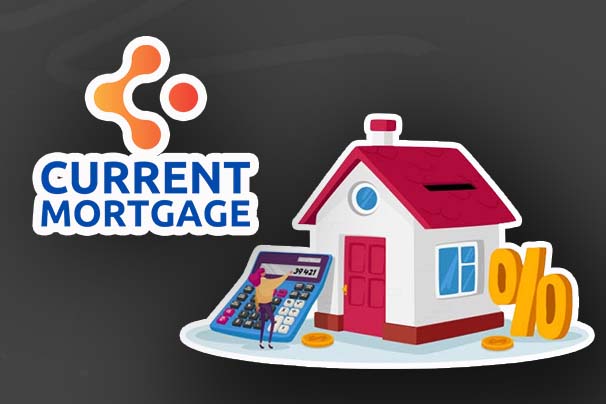
Understanding the current mortgage rates is a key factor in helping you make better financial, informed decisions. This comes through when you are making a big purchase, like buying a house or refinancing your existing mortgage.
Navigating the world of mortgage rates can seem like a really daunting task, especially when faced with constant fluctuations and market dynamics. Still, it is a very crucial thing to surmise and learn as it helps you get a more comprehensive overview of your finances and your purchases.
How Are Mortgage Rates Determined?
Firstly, mortgage rates are the interest rates that are charged on a mortgage and it represents the cost of borrowing money you want to use and buy a home. Furthermore, these are the influential factors that determine the mortgage rates:
- Federal Reserve Policy: Any decision that the Federal Reserve makes on interest rates also directly influences the mortgage rates. If the Fed increases or lowers the benchmark rate, the mortgage rates follow behind.
- Economic Indicators: These factors such as GDP growth, employment rates, and inflation can impact what the mortgage rates will be.
- Credit score and Loan-to-Value Ratio: Such factors like your LTV and credit score will impact the rate that you will be offered by lenders. If you have higher credit scores and lower LTV ratios, it will lead to you having better rates.
- Bond Market: Another influential factor is the bond market. When the bond yields rise, mortgage rates will also increase and vice versa.
These are some of the determining factors that influence the increase or low rates of the current mortgage rates.
Types of Mortgages
Here are some types of mortgages you should know about as you commence your home-buying journey
Government-Backed Loan
The Federal government insures the home loans and it provides access to eligible applicants. In doing so, they also reduce the risks for the lenders in the case where the consumer defaults on the money they owe. What’s more, these programs include USDA loans, VA loans, and FHA loans.
Jumbo Loan
A Jumbo loan surpasses the FHFA’s maximum and you can get this type of loan if you are planning to buy a home that has a huge price tag. However, if you are going for this type of loan, you should be aware that you are more likely to pay more interest rates over the term of the loan.
Adjustable-Rate Mortgage
An Adjustable-rate mortgage (ARM) has a rate that is tied to an index that tracks the market. If the index fluctuates, so does your rate too. Furthermore, this type of mortgage offers you a low rate for the initial period before your rates may increase when the agreed adjustment period comes around.
Fixed-rate Mortgage
The fixed-rate mortgage means that your interest rate will stay the same from the time you get the loan to the time you pay off. This remains an agreement whether you are refinancing or taking a new mortgage, or selling your home.
Conventional Loan
A Conventional loan is a mortgage that you get from a private lender that’s not backed by a Fed program.
These are some of the common types of loans you can get whether backed by a federal program or not.
Current Average Mortgage Interest Rates in the U.S
Take a look at the numbers and what the current interest rates in the United States are:
| Type of Mortgage | Current Rate | Rate Reported A Month Prior |
| 30-year conforming | 6.452% | 6.766% |
| 30-year jumbo | 6.928% | 7.107% |
| 30-year FHA | 6.331% | 6.601% |
| 30-year VA | 5.964% | 6.267% |
| 30-year USDA | 6.486% | 6.568% |
| 15-year conforming | 5.743% | 5.991% |
How Much Can You Borrow With A Mortgage?
The amount of money you can borrow with a mortgage is determined by an “affordability assessment”. On the other hand, your interest rate is determined by the amount of deposit that you have, also known as loan-to-value (LTV).
Furthermore, the LTV shows the size of the mortgage you will need as a proportion of the value of the house you want to purchase. So, the bigger the amount of deposit you have, the lower the LTV.
Will Mortgage Rates Go Down Soon?
It is highly expected that the Fed will begin to cut interest rates down before the end of 2024. However, in a recent meeting that happened in July, the central bank decided for the federal fund target rate to remain steady. Due to valid reasons that led to their decision, it still stands. But, there is hope for things to go down by the end of the year 2024.
Frequently Asked Questions
Here are some frequently asked questions you can check out:
Can I Lock In A Mortgage Rate?
Yes, you can easily lock in a mortgage rate. Some lenders give you the option to lock in a mortgage rate for some time, usually 30 to 60 days. Additionally, locking in a rate also protects you from the future risk of a rate increase before you close your home.
How Often Do Mortgage Rates Change?
All mortgage rates do change at intervals, sometimes daily, or even multiple times within a day. It all depends on market conditions and it is crucial to always be aware of what the current mortgage rates are.
What Is A Good Mortgage Rate?
A good mortgage rate is similar or relative to the current market conditions and what your financial profile looks like. In previous periods, anything below 5% for a 30-year fixed-rate mortgage was good. However, this can still vary and it depends on the economic environment.